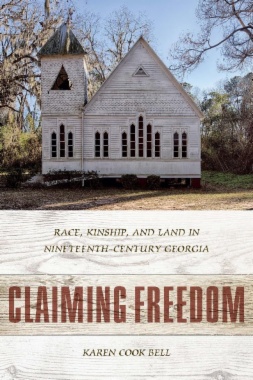

An exploration of the political and social experiences of African Americans in transition from enslaved to citizen
Claiming Freedom is a noteworthy and dynamic analysis of the transition African Americans experienced as they emerged from Civil War slavery, struggled through emancipation, and then forged on to become landowners during the Reconstruction and post-Reconstruction period in the Georgia lowcountry. Karen Cook Bell's work is a bold study of the political and social strife of these individuals as they strived for and claimed freedom during the nineteenth century.
Bell begins by examining the meaning of freedom through the delineation of acts of self-emancipation prior to the Civil War. Consistent with the autonomy that they experienced as slaves, the emancipated African Americans from the rice region understood citizenship and rights in economic terms and sought them not simply as individuals for the sake of individualism, but as a community for the sake of a shared destiny. Bell also examines the role of women and gender issues, topics she believes are understudied but essential to understanding all facets of the emancipation experience. It is well established that women were intricately involved in rice production, a culture steeped in African traditions, but the influence that culture had on their autonomy within the community has yet to be determined.
A former archivist at the National Archives and Records Administration, Bell has wielded her expertise in correlating federal, state, and local records to expand the story of the all-black town of 1898 Burroughs, Georgia, into one that holds true for all the American South. By humanizing the African American experience, Bell demonstrates how men and women leveraged their community networks with resources that enabled them to purchase land and establish a social, political, and economic foundation in the rural and urban post-war era.